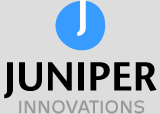With the alarming and growing trend of fake goods and counterfeit items, manufacturers are becoming increasingly concerned about product authentication. This is particularly so for pharmaceutical manufacturers, food and drink producers, the tobacco industry, car and aircraft part suppliers. Authentication requires that products at unit level can be authenticated as genuine articles and not simply that they are tracked through a supply chain. So how can this be achieved?
Marking an item as genuine during manufacturing
This can be done in a number of ways using Stealthmark’s microparticle technology. The “best” way depends on what is trying to be achieved. At a simple level however items can be securely marked with:
- Inks. For example where microparticles are used in printing processes such as barcode/RFID labelling or packaging
- Product dyes in the product itself
- Fabrics where again microparticles are within a product
- Tamper proof seals and labels. Once applied they cannot be resealed
- Shrink wrap and packaging tape. For product transit
Using Stealthmark proprietary technology microparticles can be applied without disrupting the manufacturing process e.g. using spray machines, label application technology, shrink wrap units and so forth. Items with microparticles will be authenticated as the microparticles work at a forensic level.
Linking microparticle codes to items in backend systems
Once microparticle codes are applied to items proprietary and/or bespoke integration software will link manufacturing plant, batch and material codes to unique micropartcle numbers. Note that once microparticle codes are purchased they are unique to the buyer. So for example codes can be applied at plant, product, batch, market or any other level of choice in order to create an audit trail of authenticity. What’s more is that barcode or RFID codes can also be linked in back end systems. Authentication reading of microparticles is completed by proprietary fixed or mobile hardware that will also link authentication to label codes. RFID and barcode labels allow high speed reading for tracking purposes only.
Reading codes
RFID and high speed barcode readers enable fast production line and supply chain reading of product. This is useful for tracking purposes. Since it is possible to hack or remove RFID labels and duplicate barcodes, this is not so useful for authentication purposes. Stealthmark’s fixed and portable readers however allow for product authenticity checks to be carried out throughout the supply chain. This can include warehouses, shipping points and even legitimate retail and other outlets. Our proprietary or bespoke software solutions can confirm the legitimacy of any authenticated mark.
Furthermore read marks are recorded to provide an authenticity audit trail.
Combining other technologies
Combining RFID, barcode technology and GPS tracking with microparticle authenticity provides a robust way to track and authenticate items throughout a supply chain.
Using Stealthmark technology with custom software development you can be provided with an authenticity and tracking solution to fit your business.
